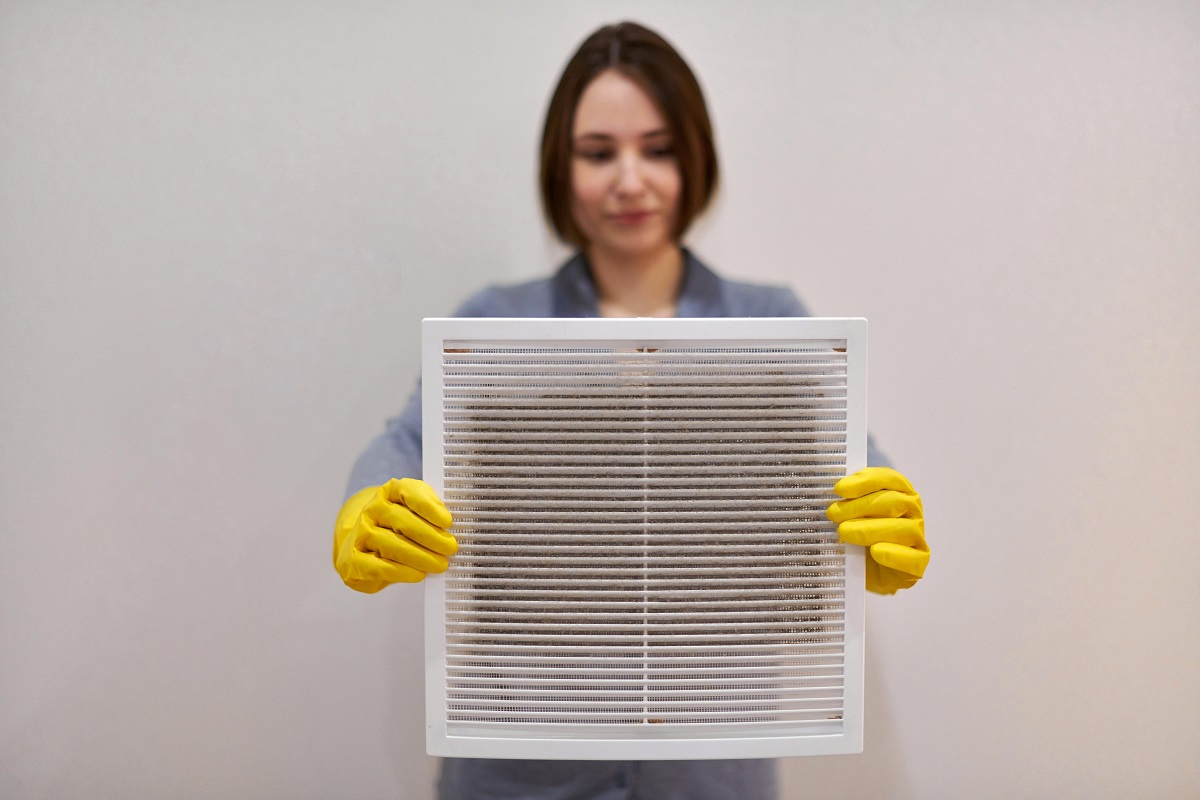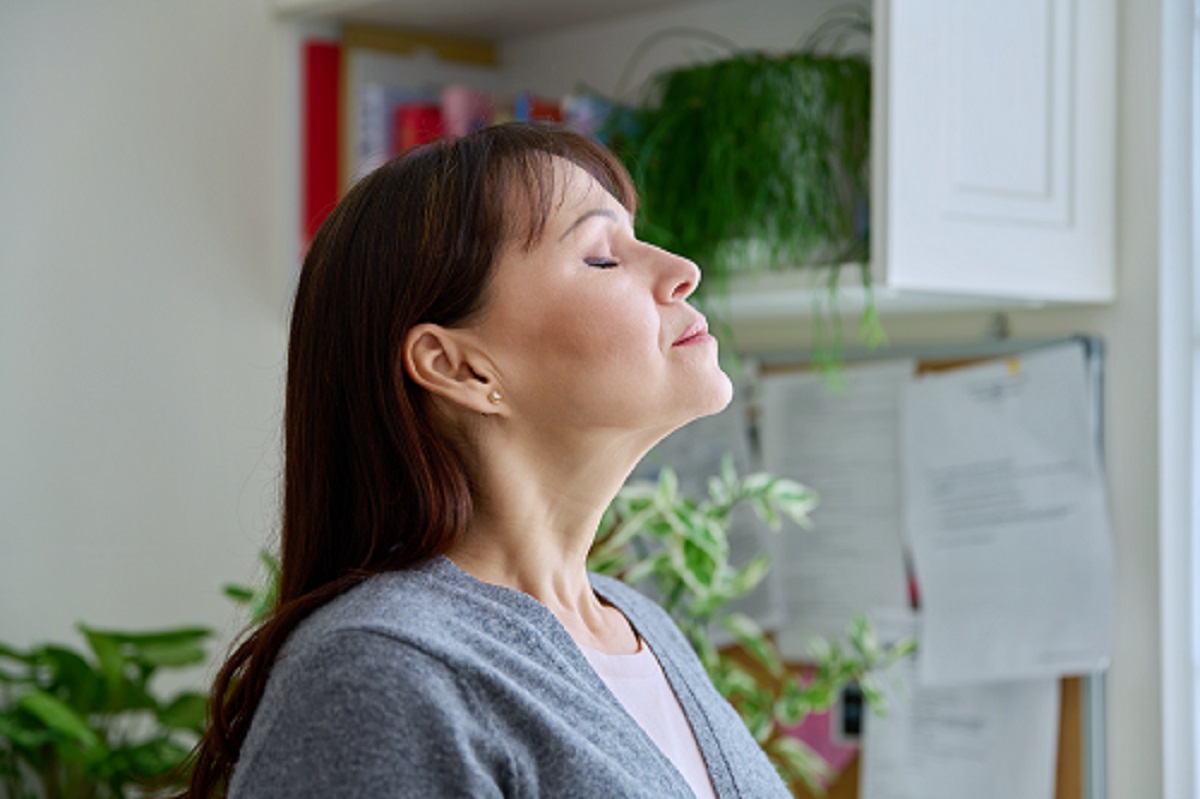How Poor Water Quality Affects Indoor Air Quality & Your Health

How Poor Water Quality Affects Indoor Air Quality: The Hidden Link in Your Home
Table of Contents
- Are Unexplained Symptoms Affecting Your Family? The Answer Could Be in Your Air and Water
- What Is the Scientific Link Between Tap Water and Indoor Air Health?
- What Are the Main Ways Water Contaminants Get Into My Air?
- Are These Hidden Environmental Health Risks at Home Making You Sick?
- Your home's water quality has a direct impact on your indoor air. When water turns to vapor or mist (from showers, cooking, or humidifiers), contaminants in the water can become airborne.
- The primary ways this happens are through the release of mineral dust from hard water, volatile organic compounds (VOCs) from treated tap water, and bacteria or mold spores.
- Excess moisture from leaks or daily activities can lead to a situation where mold growth from water damage affects air quality, releasing harmful spores that can cause respiratory issues and allergic reactions.
- To effectively solve these interconnected issues, a personalized home health assessment for water and air is the most reliable method. It analyzes your home's specific data to provide clear risks and actionable solutions.
Are Unexplained Symptoms Affecting Your Family? The Answer Could Be in Your Air and Water
Are you struggling with persistent allergies, fatigue, or respiratory irritation and can't seem to find the cause? You might be overlooking the powerful link between your home’s water and air. Many families deal with health issues that don't have a clear source, leading to frustration and worry. The culprit could be hiding in plain sight, in the water from your faucet and the air you breathe every day.
This article will explain exactly how poor water quality affects indoor air quality and what you can do about it. When you understand this connection, you can start making real changes to improve your family’s well-being. Thinking about your home as a single ecosystem is key. If you only focus on your air or only on your water, you are only seeing half the picture of your home’s health. Many people suffer from a situation where unexplained symptoms poor indoor air and water are the root cause.
At Nestwell, we exist to help people like you uncover these hidden connections. We want to empower you with scientific data and clear, simple steps. Our goal is to help you create a healthier and safer living space for you and your loved ones. You deserve to feel good in your own home, and understanding your environment is the first step.
What Is the Scientific Link Between Tap Water and Indoor Air Health?
The connection between your water and your air might seem strange at first, but the science behind it is simple. The main concept is something called aerosolization. This is just a fancy word for when a liquid turns into a fine mist or vapor that can float in the air. You see this happen every day in your home.
It’s the steam that rises from a hot shower. It’s the cool mist coming out of a humidifier. It’s the vapor that you see when you boil a pot of water for pasta. All of these are examples of water turning into tiny droplets that mix with the air in your home.
Think of it like a perfume sprayer. When you press the nozzle, the liquid perfume inside is pushed out as a fine mist. You can then smell it and even breathe it in because it is floating in the air. The same thing happens with your home's water. When it becomes a mist, whatever is in the water can come along for the ride. These tiny particles can then be inhaled deep into your lungs.
So, Can Water Contaminants Cause Indoor Air Pollution?
Yes, absolutely. When water that is carrying chemicals, minerals, or even tiny living things like bacteria becomes airborne, those contaminants become a form of indoor air pollution. These are substances that you might not mind drinking in very small amounts, but you definitely do not want to be breathing them directly into your lungs.
When these pollutants are in the air, they can travel to every room in your house. This means that an issue with the water in your bathroom or kitchen can affect the air quality in your bedroom or living room. The water from your faucet can directly contribute to the pollution inside your home, which is why understanding your water quality is so important for your overall health.
What Are the Main Ways Water Contaminants Get Into My Air?
There are several common ways that substances from your water can end up in the air you breathe. These processes happen during everyday activities, often without you even noticing. Understanding these key pathways is the first step toward finding a solution and creating a healthier home environment.
Reason Why #1: Your Humidifier Might Be Spreading More Than Moisture
A humidifier is meant to make your home more comfortable, especially in dry winter months. But if you're not careful about the water you put in it, it could actually make your air quality worse. The humidifier water quality impact on air is a serious concern for many households.
- Mineral Dust: If you live in an area with "hard water," it means your tap water has a high amount of dissolved minerals like calcium and magnesium. When you use this water in an ultrasonic or impeller humidifier, the machine turns everything in the water into a fine mist. This includes the minerals, which are then spread around your home as a fine "white dust." This dust can settle on furniture, but it can also be inhaled, which can irritate the lungs, especially in children or people with asthma.
- Bacteria and Mold: The water tank in a humidifier is a warm, wet environment, which is the perfect breeding ground for bacteria and mold. If the tank is not cleaned very often and with the right products, these germs can multiply. When you turn the humidifier on, it will then spray these germs into the air as an aerosol. Breathing in mold or bacteria can lead to respiratory infections, allergic reactions, and other health problems.
A personalized home health assessment from Nestwell analyzes public data on your local water hardness. This helps you understand if you are at high risk for mineral dust from your humidifier. This information can tell you if switching to distilled water is a critical step for your family's health.
Reason Why #2: Invisible VOCs From Household Water Sources and Air
Another major concern is a group of chemicals called Volatile Organic Compounds, or VOCs. "Volatile" simply means that these chemicals can easily turn into a gas at room temperature. When they do, they mix with your indoor air. Many people are surprised to learn about the link between VOCs from household water sources and air.
- Disinfection Byproducts: To keep our drinking water safe, city water systems use disinfectants like chlorine to kill harmful germs. While this process is important, it can also create new chemicals called disinfection byproducts (DBPs). These are formed when chlorine reacts with tiny bits of organic matter, like leaves or dirt, that are naturally present in water. One of the most common DBPs is chloroform, which is a type of VOC.
- Showers and Dishwashers: These VOCs are released from your water into your air most easily when the water is heated and agitated. A long, hot shower is the number one way this happens in a home. The heat and the spray from the showerhead release the VOCs into the steamy air of your bathroom, which you then breathe in. The hot, steamy air from a dishwasher at the end of its cycle can also release these chemicals into your kitchen.
Identifying this risk on your own is very difficult because you can't see or smell these chemicals in small amounts. Nestwell's "Healthy Home Score" cross-references your home's address with EPA data on local water treatment methods and known DBP levels. This gives you a clear and scientific picture of this hidden risk.
Reason Why #3: Excess Moisture and How Mold Growth From Water Damage Affects Air Quality
The final key link between water and air quality is moisture. It's not just about the contaminants in the water itself, but also about the water creating damp conditions where other things can grow. This is where we see how mold growth from water damage affects air quality.
- Sources of Moisture: Everyday activities contribute to moisture in your home. Cooking, showering, and even breathing add water vapor to the air. On top of that, small leaks under a sink, a leaky roof, or a damp basement can create persistently wet spots. High humidity in your local climate can also make it harder for your home to stay dry.
- Mold Spores: When surfaces in your home stay damp for too long, mold can begin to grow. Mold is a living organism that releases tiny, invisible spores into the air to reproduce. These spores are major triggers for health problems. For people with allergies or asthma, breathing in mold spores can cause immediate reactions like coughing, sneezing, and difficulty breathing. For others, long-term exposure can lead to more serious respiratory conditions or other chronic health issues. Mold can also produce harmful substances called mycotoxins, which can make people sick.
While our digital assessment can't see mold in your house, it can identify high-risk conditions that allow it to grow. By analyzing your local climate data for high humidity and asking you key questions about your home’s age and ventilation systems, Nestwell helps you pinpoint areas where excess moisture could be turning into a dangerous mold problem.
Are These Hidden Environmental Health Risks at Home Making You Sick?
After learning about mineral dust, VOCs, and mold spores, you may be wondering if these pollutants are the cause of your family’s health issues. It can be frustrating to deal with symptoms day after day without knowing why. The truth is, many `hidden environmental health risks at home` can cause nagging symptoms that are often overlooked or blamed on other things.
It's common for people to think they just have "bad allergies" or are "always tired" without ever considering that their home environment is the problem. Because you can't see the pollution, it's easy to dismiss.
Here is a list of common symptoms that can be caused or made worse by poor indoor air and water quality:
- Chronic coughing, wheezing, or sneezing
- Asthma attacks that happen more often or are more severe
- Persistent allergy symptoms, like a stuffy or runny nose
- Unexplained headaches or a feeling of constant fatigue
- Irritation of the skin, eyes, or throat
- Frequent sinus congestion or infections
- Difficulty concentrating or "brain fog"
If you or your family members experience these symptoms regularly, it is a very strong sign that you should investigate your home's environment. It is completely valid to be concerned, and you are not just imagining it. The connection between your home and your health is real and powerful.
You don't have to keep guessing if your home is the cause of your health problems. Nestwell is the tool that makes the invisible visible. We provide the hard data and scientific analysis to help you finally connect the dots between these frustrating symptoms and the specific environmental factors in your home.
What Are the Best Solutions for Combined Water and Air Quality Issues?
Now that you understand the problem, it's time to talk about the solution. Tackling these issues can feel overwhelming. Do you need a water filter? An air purifier? A dehumidifier? Which models are best? Trying to find the right products and strategies on your own can be confusing, time-consuming, and expensive. You might end up buying something you don't need or missing the real source of the problem.
Because the issues of water quality and air quality are connected, the best way to fix them is with a connected solution. You need a strategy that looks at your whole home as one system. This is the only way to make sure you are addressing the root cause and not just treating a symptom. A unified approach ensures you invest your time and money wisely to get the biggest health benefits.
How a Personalized Home Health Assessment for Water and Air Provides Clarity
Instead of guessing, you can use a powerful tool that does the hard work for you. A personalized home health assessment for water and air is designed to give you clarity and confidence. It takes the guesswork out of creating a healthy home by using real data to find your specific risks and give you a clear path forward.
Here is how the Nestwell process works:
- Comprehensive Data Analysis: We start by analyzing real-time and historical data from trusted scientific sources, like the EPA for water quality and OpenWeatherMap for air quality and weather patterns. We look at data specific to your exact address to understand how water quality affects indoor air in your unique home, not just in general.
- The Healthy Home Score: After our analysis, you receive a simple, easy-to-understand score. This score instantly tells you the overall health status of your home's environment. It’s a quick snapshot that lets you know where you stand, so you don't have to dig through complex scientific reports.
- Personalized Risk Report: We don't stop at the score. Your report will pinpoint the specific risks we find in your home. We will tell you if you are at high risk for mineral dust from hard water, VOCs from water treatment, or damp conditions that are perfect for mold growth. We explain what these risks mean for your health in plain, simple language.
- Actionable, Tailored Solutions: This is the most important step. We don't just give you a list of problems; we give you real solutions. Our recommendations are completely tailored to you. We might suggest a specific type of water filter that targets the exact contaminants in your area, or an air purifier that is the right size and type for your home's risks. We also provide affordable and renter-friendly options, so everyone can create a healthier space.
Breathe Easier and Live Healthier Starting Today
You now know that your home's air and water quality are fundamentally linked. The steam from your shower and the mist from your humidifier can carry hidden pollutants into the air you breathe every second of the day. To truly improve your family's health and well-being, you must address both of these areas together.
You don’t have to live with the stress and uncertainty of hidden household risks any longer. Taking control of your home environment is one of the most powerful things you can do for your health. Knowledge is the first step to a healthier home, and you've already taken that step by reading this article. Now it's time to move from worry to action.
Stop guessing about what's in your air and water. Get Your Personalized Healthy Home Score from Nestwell Today and take the first concrete step toward a healthier home environment.
Key Takeaways
- Interconnected Issues: Poor water quality directly impacts indoor air through aerosolization, releasing mineral dust, VOCs, and mold spores that cause respiratory problems.
- Common Pathways: Humidifiers, showers, and excess moisture are key ways contaminants enter the air, leading to health risks like allergies and fatigue.
- Symptoms to Watch: Persistent coughing, headaches, and allergies may signal hidden environmental issues in your home.
- Solution Approach: A personalized home health assessment provides data-driven, tailored strategies for improving water and air quality together.
Frequently Asked Questions
Question: How can I know for sure if water contaminants can cause indoor air pollution in my specific house?
Answer: While general signs like mineral buildup on faucets or a strong chlorine smell from your tap are clues, the only way to know for certain is through a data-driven analysis. A diagnostic tool like Nestwell's Healthy Home Score uses local water and air quality data specific to your address to give you a personalized risk assessment without the need for complicated and expensive in-home testing.
Question: What are the most common VOCs from household water sources and air that I should be worried about?
Answer: The most common are disinfection byproducts, or DBPs. A specific group of DBPs called trihalomethanes (which includes chloroform) are very common. They are formed when chlorine, used to disinfect public water systems, reacts with natural organic matter in the water. These chemicals can be released into your indoor air, especially when you use hot water for showering or washing dishes.
Question: My family experiences unexplained symptoms. It seems poor indoor air and water might be the cause, but how do I confirm it?
Answer: It's a very strong possibility that your home environment is contributing to your symptoms. Many hidden environmental health risks at home show up as chronic, low-grade issues like headaches, fatigue, and allergies. The best first step is to assess your environment. Nestwell’s assessment is designed to help you connect your family's health symptoms to specific, data-backed environmental factors in your home, giving you the confirmation you need.
Question: What are some immediate solutions for combined water and air quality issues I can implement?
Answer: Some simple first steps can make a difference right away. You can start using distilled or filtered water in your humidifier to prevent mineral dust and bacteria growth. Always use the ventilation fan in your bathroom during and for 30 minutes after a shower to remove moisture and VOCs. You can also open your windows for a few minutes each day to improve air circulation. For more targeted and effective solutions, a personalized home health assessment for water and air from Nestwell will tell you exactly which filters, purifiers, or daily habits will make the biggest positive impact for your unique situation.






